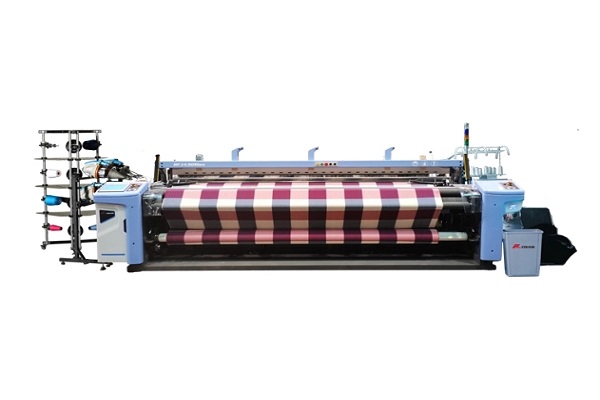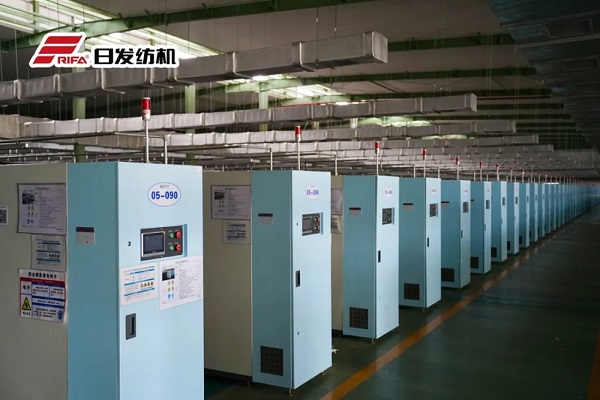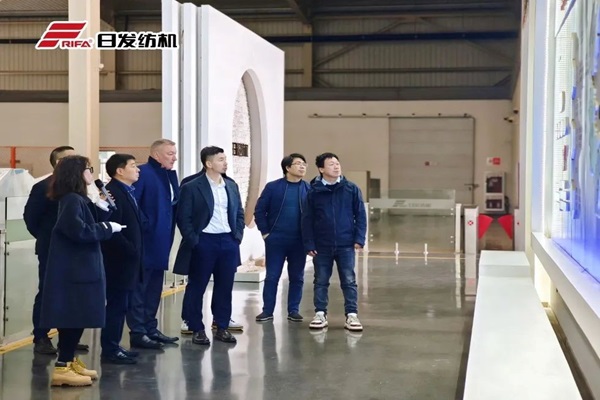En
Rapier Loom: As a type of shuttleless loom, the rapier loom is renowned for its unique rapier weft insertion system. Despite its relatively high cost and slightly higher energy consumption, these characteristics endow it with an extraordinary ability to weave fancy fabrics. Its maximum width can reach 190cm, and its mechanical structure is relatively simple, making it easy to operate and maintain. It is particularly suitable for small-batch, multi-variety production needs.
Projectile Loom: Utilizing a clip to fix the weft yarn, this innovative design allows the projectile loom to demonstrate excellent performance in weaving high-end products. Its width design is flexible and can be adjusted to larger sizes based on production needs, meeting the special requirements for broad fabrics in the high-end market.
Water-Jet Loom: Known for its extremely high weaving speed, the water-jet loom is the preferred choice for enterprises pursuing large-scale, low-cost, high-efficiency production. The water-jet loom uses high-speed jet water to guide the weft yarn. However, due to the characteristic that the speed of the water flow decreases, it is more suitable for producing narrow or medium-width fabrics. This type of shuttleless loom plays an important role in fast fashion, home textiles, and other fields that require rapid mass production.
Air-Jet Loom: Using air as the power source, the air-jet loom is mainly used for weaving short fibers and long synthetic fibers. It offers a rich variety of weft yarns and can easily achieve 4-6 color weft changes, making it possible to weave colorful fabrics. The air-jet loom is particularly good at producing thin and single-color fabrics. Its finished product quality is stable, making it suitable for scenarios with high fabric quality requirements.
High Production Speed and Efficiency: Compared to traditional shuttle looms, shuttleless looms have made a qualitative leap in weaving speed, greatly enhancing production efficiency.
Reduced Labor Costs: The high degree of automation in shuttleless looms reduces the need for manual operation, thereby lowering labor costs.
Lower Defective Rate: The precise control system and advanced weaving technology ensure fabric quality stability, reducing the defective rate.
Low Noise: Shuttleless machine produce relatively low noise during operation, improving the work environment and protecting workers' hearing health.
Reduced Weft Yarn Winding Process: Some shuttleless loom designs optimize the weft yarn handling process, reducing the need for the winding process and increasing the continuity and efficiency of the production process.
High Fabric Value: Because shuttleless weaving machine can produce high-quality, diversified fabrics, their finished fabrics often have higher market value.
Suitable for Market Trade: They can quickly respond to market demands, flexibly adjust production plans and product types, making shuttleless machines indispensable textile equipment in international trade.
Fewer Accidents: Advanced safety protection mechanisms and stable operating status reduce the risk of accidents during production.
Easy Maintenance, Reduced Worker Labor Load: Modular design and intelligent maintenance systems make the maintenance of shuttleless looms simple and quick, while also reducing the workload on workers.
Ideal for Mass Production: Whether it is the high-speed production of water-jet looms or the diversified weaving capabilities of air-jet looms, shuttleless looms prove to be ideal choices for mass production.


